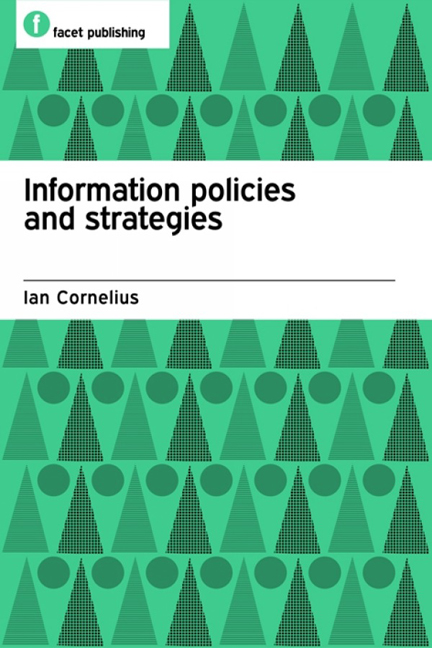Part 1 - Contexts for information policy
Published online by Cambridge University Press: 08 June 2018
Summary
RARELY DOES ANY information issue arise that is divorced from any connection with other questions. Even with seemingly clear information issues like censorship, the control of content, the context is critical. How critical will become apparent when we consider international information rights.
Understanding the international contexts
Understanding the contexts is important if we are to comprehend the total information picture, and important if we are to analyse what information policies and strategies should be. Let us start with two simple statements. First, information issues are about utterances, but they are also about ideas. Second, the current information context is strongly influenced by international trade and the internationalization of technology through global provision of access to communication media. We need ways of understanding these and there are three that we will discuss in Part 1:
■ the idea of an information society and its impact on the regulation of information
■ the idea of a public sphere in which ideas are communicated and messages exchanged
■ the idea of information rights.
Let us consider first the association between utterances and ideas. We cannot separate any statement from the medium it appears in, and we cannot isolate a statement in any medium or format from all other forms of that statement, or the context in which it acquires meaning. In the previous chapter the instance of separating the book from the film or the web page was mentioned, but we must go further and identify the social attitude towards some texts – sacred texts or legal testimony, for example – and the process by which a document can appear before you. The newspaper in your hand is a by-product of a long sequence of actions by which journalists observe events, write up or compose copy, perhaps including not only a description of the event but also some commentary and analysis, and send that copy electronically to the newspaper office where decisions about the content of the next issue and each individual page are made. Then pages are laid out, there may be decisions to excise some content and include local specific content for regional issues, and the electronic tape is distributed to printing outlets where the paper is finally produced, distributed and sold.
- Type
- Chapter
- Information
- Information Policies and Strategies , pp. 19 - 26Publisher: FacetPrint publication year: 2010



